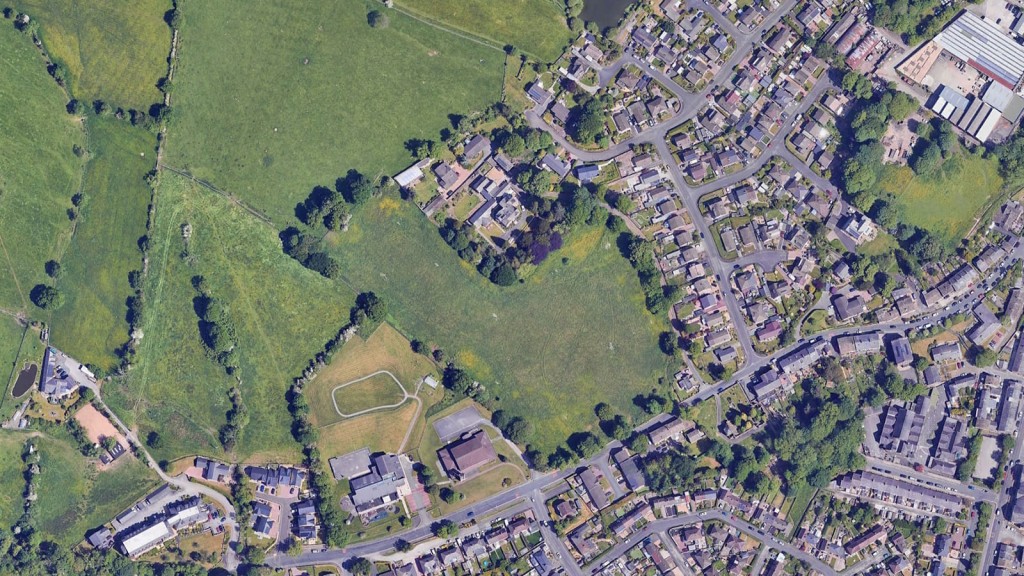Read next
The latest news, updates and expert views for ambitious, high-achieving and purpose-driven homeowners and property entrepreneurs.


Picture this: You own a piece of land that could be worth millions more than you paid for it.
The difference between that potential and reality?
A single consultation period that most landowners either miss entirely or approach completely wrong.
The Regulation 18 stage isn't just another planning hurdle - it's the make-or-break moment that determines whether your land becomes a valuable development allocation or remains forever constrained by restrictive planning designations.
Miss this window, and you could be watching from the sidelines as neighbouring landowners cash in on opportunities that should have been yours.
Here's what most landowners don't realise: This stage represents the only genuine opportunity to influence how your land is designated in the emerging planning framework. Once this consultation closes, the game is essentially over.
But here's the thing...
Understanding how to navigate this process effectively isn't just about following procedures.
It's about positioning your land strategically in a competitive environment where councils typically receive 3-5 times more site promotions than they can ever allocate.
The landowners who succeed? They understand something crucial that the rest miss entirely.

Regulation 18 of the Town and Country Planning (Local Planning) (England) Regulations 2012 sets the legal foundation for early-stage consultation during local plan preparation. It requires local planning authorities to invite feedback on what their emerging local plan should contain - not just from statutory consultees, but also from the general public and anyone they consider relevant to the plan’s scope.
In other words, councils must cast a wide net. They're legally obligated to consult statutory organisations like Natural England and Historic England, voluntary and community groups, business interests, and local residents. For landowners, this creates a formal - and often underused - opportunity to shape how land is allocated in the future plan.
Crucially, Regulation 18 is not about reviewing a finished plan - it’s the exploratory phase, where councils are genuinely open to shaping the content. In contrast, Regulation 19 focuses on gathering formal responses to a near-final draft.
This distinction makes Regulation 18 the most important window for landowners to promote their land for development. In fact, data from the Planning Inspectorate shows that over 85% of successful site allocations were first introduced at this stage. Those promoted later? Less than 15% made it in.
Under Regulation 18, councils must invite representations from three categories of consultees:
Understanding these categories helps landowners see just how many voices are involved in plan-making - and why compelling, evidence-led submissions are essential to stand out.
The window of opportunity at the Regulation 18 stage is finite and non-renewable. Once this consultation closes, the council will use the evidence gathered to inform the draft allocations in the emerging local plan. Sites not promoted at this stage are highly unlikely to be considered for allocation in later iterations of the plan.
Consider the recent experience in Hertfordshire, where over 400 sites were promoted during the Regulation 18 consultation for the emerging local plan. Of these, approximately 60 sites progressed to draft allocation status.
But here's the kicker: Not a single site that wasn't promoted during Regulation 18 was subsequently allocated, despite some landowners attempting to introduce sites during the Regulation 19 stage.
This timing constraint creates both urgency and opportunity. Landowners who act decisively during this window can position their sites favourably, while those who delay may find themselves excluded from consideration entirely.
The duration of Regulation 18 consultation varies significantly between authorities, but understanding typical timeframes helps landowners plan their approach effectively. Most councils run Regulation 18 consultations for 6-8 weeks, though some extend this to 12 weeks for major plan reviews.
However, the consultation period itself represents only the tip of the iceberg. Councils typically spend 6-12 months preparing for Regulation 18, gathering evidence, commissioning studies, and developing initial policy directions.
Following the consultation, authorities usually require another 12-18 months to analyse responses, commission additional evidence, and prepare for Regulation 19.
This extended timeline means that landowners need to think strategically about when to begin their preparation. Starting work only when the consultation opens leaves insufficient time for comprehensive evidence gathering and masterplan development.

Regulation 18 represents a crucial opportunity for landowners to influence how their land is treated in the emerging local plan. By promoting a site effectively at this stage, landowners can significantly increase the chances of securing an allocation — and with it, the potential for substantial uplift in land value.
The following sections explore the key ingredients of a successful promotion strategy, from evidence and masterplanning to community engagement.
Site promotion during the Regulation 18 stage is the primary mechanism through which landowners can influence how their land is designated in the emerging local plan. A well-executed promotion strategy can transform a site from an unallocated parcel of land into a designated development opportunity, potentially increasing its value significantly.
The financial implications are substantial. Our analysis of recent land transactions shows that successful site allocations can increase land values by 300-500% compared to unallocated agricultural or employment land. For a typical 5-hectare site on the urban fringe, this could represent a value uplift of £2-5 million.
The promotion process involves more than simply notifying the council of development interest. It requires a comprehensive case that demonstrates how the site can contribute to the council's strategic objectives, addresses potential constraints, and provides evidence of deliverability.
Local planning authorities expect site promotions to be supported by robust evidence that demonstrates both the site's suitability for development and its deliverability.
Based on our experience across London and the South East, councils consistently prioritise submissions that demonstrate three core elements: technical feasibility, strategic alignment, and delivery certainty.
This evidence base typically includes:
Additionally, councils increasingly expect to see preliminary viability assessments, particularly for sites that may require significant infrastructure investment. A recent survey of planning officers across 25 local authorities revealed that 78% consider viability evidence "essential" or "very important" when assessing site promotions, up from just 45% five years ago.
The quality and comprehensiveness of this evidence directly influences how seriously the council will consider the site for allocation.
The value of professional masterplanning in site promotion cannot be overstated. At Urbanist Architecture, we believe that to elevate a submission from a speculative proposal to a credible development vision, landowners must invest in demonstrating a deep understanding of placemaking and deliverability.
A masterplan de-risks the site in the eyes of council officers. It shows that the promoter has thought through the complexities of development. Key components include a clear vision, an indicative layout for a scheme such as a residential-led mixed-use development, a movement strategy, a green infrastructure strategy, and an infrastructure delivery and phasing plan.
In a recent project promoting a 12-hectare site in Essex, the inclusion of a comprehensive masterplan was instrumental in securing allocation. The masterplan demonstrated how the development could deliver 450 homes while achieving 15% biodiversity net gain, providing new community facilities, and creating a network of green corridors connecting to existing habitats. Without this level of detail, the site would likely have been dismissed as speculative.
Community engagement during Regulation 18 can significantly influence a site's prospects for allocation. While councils lead the formal consultation process, proactive landowners often benefit from early engagement with local communities, parish councils, and resident groups.
Effective community engagement serves multiple purposes. It helps identify local concerns early, allowing these to be addressed in the promotion submission. It demonstrates to councils that the landowner is committed to responsible development. Most importantly, it can help build local support or at least reduce opposition to the proposed allocation.
However, community engagement must be handled carefully. Premature or poorly managed engagement can generate opposition that becomes difficult to overcome. The most successful approach involves presenting a clear vision for how development would benefit the local community, addressing infrastructure concerns, and demonstrating commitment to high-quality design and environmental protection.

Preparing a strong Regulation 18 submission is as much about clarity and strategy as it is about evidence. With hundreds of competing sites vying for allocation, landowners must go beyond the basics to present a submission that is both comprehensive and compelling.
The following sections outline how to craft a standout promotion - from building a persuasive case and addressing constraints to staying engaged long after submission.
A successful intervention at the Regulation 18 stage depends entirely on the quality and persuasiveness of a Regulation 18 submission. In a competitive environment, a comprehensive and professionally prepared promotion document is a necessity. The average council receives between 200-600 site promotions during Regulation 18 consultation, meaning your submission must stand out from a crowded field.
The goal of this effective site promotion is to secure one of the coveted site allocations for a project, which could be a high-quality residential-led mixed-use development.
Here's your complete checklist:
|
|
TYPICAL TIMEFRAME |
|
Core Documents |
|
|
Accurate Red Line Plan |
1–2 weeks |
|
Land Ownership Details / Proof of Control |
1 week |
|
Completed Council ‘Call for Sites’ Form |
2–3 days |
|
Strategic Narrative |
|
|
Visionary Planning Statement aligning with Local Plan objectives |
3–4 weeks |
|
Analysis of how the site helps the council meet its strategic needs |
2–3 weeks |
|
Market demand analysis and development viability overview |
2–3 weeks |
|
Technical Evidence |
|
|
Preliminary Access Appraisal (by a transport consultant) |
2–3 weeks |
|
Flood Risk Assessment (FRA) – initial check and screening |
2–3 weeks |
|
Preliminary Ecological Appraisal (PEA) |
3–4 weeks |
|
Heritage Constraints Check (Listed Buildings, Conservation Areas, Archaeology) |
2–3 weeks |
|
Landscape and Visual Impact Appraisal (LVIA) – initial assessment |
3–4 weeks |
|
Utilities and infrastructure capacity assessment |
2–3 weeks |
|
Ground conditions and contamination screening |
2–4 weeks |
|
The Vision |
|
|
Indicative Masterplan showing layout, access, and green infrastructure |
4–6 weeks |
|
Biodiversity Net Gain Strategy (initial principles and calculations) |
2–3 weeks |
|
Phasing and Delivery Strategy |
2–3 weeks |
|
Design and Access Statement (preliminary) |
2–3 weeks |
|
Community benefits and infrastructure contributions analysis |
2–3 weeks |
|
Total Timeframe |
12–16 weeks |
But completing the checklist is just the beginning...
Comprehensive site analysis forms the foundation of any successful promotion. This goes far beyond basic constraints mapping to include detailed assessment of opportunities, challenges, and development potential.
Physical site analysis should examine topography, drainage patterns, existing vegetation, access points, and relationship to surrounding development. Understanding these factors helps inform realistic development capacity and layout options.
Planning policy analysis requires detailed review of current and emerging policy frameworks. This includes not just the local plan being reviewed, but also the National Planning Policy Framework, regional strategies, and neighbourhood plans. Understanding policy requirements helps ensure the promotion aligns with planning objectives.
Market analysis demonstrates demand for the proposed development type and helps establish viability. This should include analysis of comparable developments, local market conditions, and infrastructure requirements.
Infrastructure analysis examines capacity in utilities, transport networks, education, and healthcare. Understanding infrastructure constraints and opportunities helps inform development phasing and community benefits packages.
The planning statement represents the core narrative of your site promotion, weaving together technical evidence into a compelling case for allocation.
A strong planning statement should address several key themes:
Every site has constraints, and attempting to hide or minimise these destroys credibility with planning officers. The most successful promotions acknowledge constraints upfront and demonstrate how they can be mitigated or turned into opportunities.
So, what are the most common constraints?
The key is demonstrating that constraints have been thoroughly assessed and that realistic solutions exist. This builds confidence in the site's deliverability.
The local plan consultation does not end with your initial submission. The journey from promotion to allocation is a marathon, not a sprint. Sustained, professional engagement is essential. Our experience shows that landowners who maintain active engagement throughout the plan-making process are 40% more likely to secure allocation compared to those who submit once and wait passively.
This involves:
Active engagement also means building relationships with key council officers and elected members. While formal lobbying rules must be respected, legitimate engagement through public meetings, planning committee sessions, and consultation events can help maintain your site's profile throughout the plan-making process.

Robust technical evidence is essential to demonstrate that a site is both suitable and deliverable. Councils expect land promotion submissions to be supported by clear, professional assessments that address environmental impact, transport capacity, and infrastructure needs.
The following sections outline the core studies typically required - and why they matter.
Environmental assessment forms a critical component of any site promotion, helping demonstrate that development can be delivered without unacceptable environmental impacts. The scope of assessment depends on site characteristics, but several studies are typically essential.
Transport assessment has become increasingly important in site promotion, reflecting growing emphasis on sustainable transport and traffic impact management. A preliminary transport assessment should examine existing transport networks, accessibility by different modes, and potential traffic impacts.
The assessment should identify the site's accessibility by walking, cycling, and public transport. Sites with good sustainable transport links are increasingly favoured by councils seeking to reduce car dependency.
Traffic impact analysis examines potential impacts on the local road network and identifies any necessary improvements. This should include consideration of cumulative impacts with other proposed developments.
Parking provision analysis considers appropriate parking standards and management approaches. Many councils are reducing parking requirements in accessible locations while requiring robust parking management in less accessible areas.
Travel planning opportunities should be identified, showing how sustainable transport can be promoted through the development. This might include cycle facilities, public transport contributions, or car club provision.
Infrastructure capacity assessment examines whether existing infrastructure can accommodate proposed development or whether upgrades are required. This assessment should cover utilities, education, healthcare, and community facilities.

Securing a strong submission at Regulation 18 is only the beginning. What follows is a multi-stage process in which councils assess promoted sites, refine their draft plans, and prepare for public examination. Understanding what happens next - and how to stay engaged - is essential for keeping your site on track for allocation.
There is no fixed statutory timeframe, but typically the Regulation 19 consultation will begin 6 to 18 months after the Regulation 18 stage closes. However, recent delays in plan-making mean this timeframe is extending. Our analysis of 50 local plans adopted since 2020 shows an average gap of 14 months between Regulation 18 and Regulation 19 consultations, with some authorities taking over 24 months.
The key difference is that the Regulation 19 consultation is on a near-final draft plan, and representations must focus on the plan's legal compliance and 'soundness', rather than proposing new ideas.
During this interim period, councils undertake detailed assessment of promoted sites, often commissioning specialist studies on transport, landscape, heritage, and environmental impacts. This is when the quality of your initial submission becomes crucial - sites with comprehensive evidence bases are more likely to progress through this filtering process.
Following Regulation 18 consultation, councils undertake systematic assessment of all promoted sites through the Strategic Housing and Economic Land Availability Assessment (SHELAA) process. Understanding this assessment methodology helps landowners appreciate what councils are looking for.
The SHELAA process typically involves several stages. Initial filtering removes sites that are clearly unsuitable due to absolute constraints such as flood risk, heritage designations, or access impossibility.
Detailed assessment examines remaining sites against multiple criteria including sustainability, deliverability, and strategic fit. Sites are typically scored against these criteria to enable comparison.
Sustainability appraisal examines environmental, social, and economic impacts of potential allocations. This process often identifies mitigation requirements or design principles for allocated sites.
Viability assessment examines whether sites can viably deliver policy requirements including affordable housing, infrastructure contributions, and design standards.
The outcome of this assessment process determines which sites progress to draft allocation in the Regulation 19 plan.
After the Regulation 19 consultation, the draft plan and all representations are submitted to the Secretary of State, who appoints an independent planning inspector to conduct an Examination in Public (EiP).
The EiP is a quasi-judicial process where the inspector scrutinises the plan's soundness. The inspector has significant powers, including the ability to remove site allocations, modify boundaries, or require additional evidence. Recent statistics show that approximately 15-20% of proposed allocations are modified or removed during examination.
The outcome can determine whether a site remains allocated in the final adopted plan.
For landowners with allocated sites, the examination period requires continued vigilance. You may be invited to participate in hearing sessions, particularly if objections have been raised to your site's allocation. Professional representation during this phase is often essential, as the inspector's questions can be highly technical and legally complex.
The examination process typically takes 12-18 months from submission to the inspector's report. During this period, the inspector may request additional evidence, propose modifications, or require further consultation on significant changes.
Following the inspector's report, councils typically require 3-6 months to consider recommendations and formally adopt the plan. The total timeframe from Regulation 18 to adoption typically ranges from 3-5 years, though some plans take longer due to legal challenges or complex issues.
Once adopted, the local plan provides the policy framework for development management decisions. Allocated sites benefit from policy support for development, though detailed planning permission is still required.
Understanding these timeframes helps landowners plan their development strategy and manage expectations about when development opportunities might materialise.

Even strong sites can fail to secure allocation if the promotion strategy is flawed. Based on our review of hundreds of submissions, the majority of failures stem not from the land itself, but from avoidable missteps in timing, evidence, or strategy. In this section, we highlight the most common pitfalls - and how to avoid them.
Throughout the process, landowners can fall into several common traps that undermine their chances of success. Based on our analysis of hundreds of site promotions, we've identified the following failure patterns that account for almost 80% of unsuccessful submissions.
Avoiding these pitfalls is as important as proactive promotion:
Additional common mistakes include:
Late submission is the most common and most fatal error in site promotion. Understanding why this happens helps landowners avoid this trap.
Many landowners are simply unaware of the Regulation 18 process until it's too late. Unlike planning applications, which are widely understood, the local plan process receives less public attention despite its fundamental importance.
Others underestimate the time required for comprehensive submission preparation. Gathering technical evidence, preparing masterplans, and developing strategic narratives requires significant lead time.
Some landowners adopt a wait-and-see approach, hoping to understand council preferences before submitting. However, this strategy fails because Regulation 18 is precisely the stage where councils are seeking input on their preferences.
Procrastination often stems from the complexity of the process and uncertainty about requirements. However, delaying action only makes the challenge greater as deadlines approach.
The solution is early engagement with the local plan process, ideally beginning preparation 6-12 months before consultation opens.
Weak evidence is the second most common cause of promotion failure. Understanding what councils consider inadequate helps landowners avoid this pitfall.
Here’s a round-up of what we believe amounts to weak evidence:
The solution is comprehensive, up-to-date, site-specific evidence prepared by qualified professionals working as a coordinated team.
Unrealistic capacity assumptions are a common weakness that can undermine a submission’s credibility. These typically arise from misunderstandings of policy, local character, or practical constraints. To avoid them, we recommend the following:
Ultimately, our advice is to conduct a realistic capacity assessment grounded in site constraints, planning policy, and market conditions.

Regulation 18 is more than just a planning milestone - it’s the first step in a longer journey to maximise the value of your land. Landowners who approach this stage strategically can lay the groundwork not only for site allocation, but for planning success, market appeal, and ultimately, higher land value.
The sections below explore how early investment, smart positioning, and long-term thinking turn a Regulation 18 submission into a foundation for sustained value realisation.
Engaging in the Regulation 18 process is a strategic investment. A successful promotion strategy does more than just secure a site allocation; it builds a foundation for realising the land's maximum value. The evidence base and masterplanning work prepared for the local plan consultation can be refined and used to support a subsequent outline planning application once the plan is adopted.
This approach delivers compound value. The technical assessments commissioned for site promotion can be reused and refined for subsequent planning applications, creating efficiency and consistency throughout the development process.
The strategic value extends beyond immediate development prospects. Allocated sites benefit from policy support that makes planning permission more likely and reduces development risk. This policy support translates into higher land values and greater attractiveness to developers.
Early investment in comprehensive promotion also builds relationships with council officers, local communities, and technical consultants that prove valuable throughout the development process.
Site allocation typically delivers immediate and substantial land value uplift. As we mentioned earlier, our in-house analysis of recent transactions shows that allocation can increase land values by 300-500% compared to unallocated land, though the exact uplift depends on location, development type, and market conditions.
The value uplift reflects several factors.
However, allocation alone doesn't guarantee maximum value realisation. The quality of allocation policies, infrastructure provision, and market conditions all influence ultimate value outcomes.
Sites that aren't allocated face greater hurdles in securing planning permission - but development isn’t impossible.
Understanding the implications can help you plan alternative strategies:
Success is possible - but it depends on understanding the policy landscape and identifying viable development pathways.
As London architects and urban designers, we believe strategic site promotion is the key to unlocking this value. By viewing the Regulation 18 stage not as a standalone administrative hurdle, but as the foundational phase of a long-term asset management strategy, landowners can position themselves to navigate the complexities of the planning system effectively.
The most successful landowners we work with treat Regulation 18 as the beginning of a 5-7 year value realisation journey. They understand that the quality of their initial promotion directly influences not just allocation prospects, but also the ease and speed of subsequent planning applications, the attractiveness of their site to developers, and ultimately the premium they can command when disposing of their land.
Long-term value maximisation requires strategic thinking about development timing, market conditions, and infrastructure delivery. Allocated sites benefit from flexibility in development timing, allowing landowners to optimise market conditions.
Building strong professional relationships during the promotion process pays dividends throughout the development journey. Planning officers, technical consultants, and community stakeholders all play important roles in subsequent planning applications.
Maintaining site promotion quality through to planning application ensures consistency and builds on the policy support established through allocation. This continuity reduces risk and accelerates the planning process.
Because here's the truth that separates the winners from everyone else: The Regulation 18 stage isn't just about getting your site allocated. It's about positioning your land as the obvious choice in a competitive market, building the evidence base that will support future planning applications, and creating the professional relationships that will smooth your path through the planning system for years to come.

In a crowded field of site promotions, success often depends on going beyond the basics. Landowners who adopt advanced strategies - from competitive positioning and political engagement to objection management - significantly improve their chances of allocation.
This section explores how to elevate your promotion and stand out in a competitive planning environment.
In a competitive promotion environment, success often hinges on how effectively you differentiate your site from others. That means analysing competing sites and clearly presenting your own advantages.
Key strategies include:
While planning decisions are meant to be based on technical merit, political context often shapes outcomes. Strategic, respectful engagement with political stakeholders can strengthen your site's prospects.
Key considerations include:
Objections to site promotion are common and should be anticipated rather than feared. Understanding how to address objections constructively can actually strengthen your promotion.
Common objection themes include traffic impact, infrastructure capacity, environmental impact, and character concerns. Anticipating these objections allows proactive evidence gathering and mitigation proposals.
Technical responses to objections should be proportionate and evidence-based. Over-responding to minor concerns can appear defensive, while under-responding to legitimate issues undermines credibility. Plus, community engagement can help address objections through dialogue and compromise. Sometimes objections reflect misunderstanding that can be resolved through better communication.
Design responses often address character and environmental concerns effectively. High-quality design proposals that respond to local context can overcome initial objections and build support.
The key is treating objections as opportunities to strengthen your proposal rather than obstacles to overcome.
This comprehensive approach to Regulation 18 engagement positions landowners for long-term success in the planning system, building the foundation for value realisation that extends far beyond the immediate consultation period.

If you're serious about unlocking the value of your land through the Regulation 18 process, the difference between success and missed opportunity often comes down to expert guidance.
At Urbanist Architecture, we specialise in helping landowners like you navigate the complexities of site promotion - from strategy and masterplanning to submission and political engagement.
Don’t wait until the window closes. Get in touch with our team today to learn how we can help you.

Nicole I. Guler BA(Hons), MSc, MRTPI is a chartered town planner and director who leads our planning team. She specialises in complex projects — from listed buildings to urban sites and Green Belt plots — and has a strong track record of success at planning appeals.
We look forward to learning how we can help you. Simply fill in the form below and someone on our team will respond to you at the earliest opportunity.
The latest news, updates and expert views for ambitious, high-achieving and purpose-driven homeowners and property entrepreneurs.
The latest news, updates and expert views for ambitious, high-achieving and purpose-driven homeowners and property entrepreneurs.










We specialise in crafting creative design and planning strategies to unlock the hidden potential of developments, secure planning permission and deliver imaginative projects on tricky sites
Write us a message